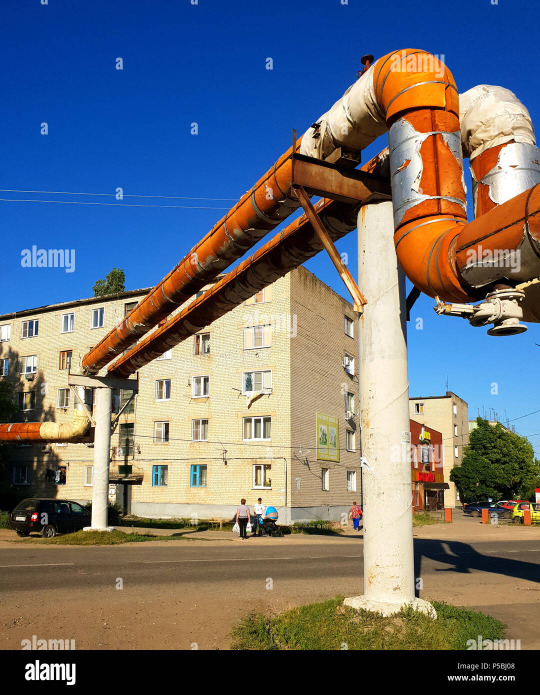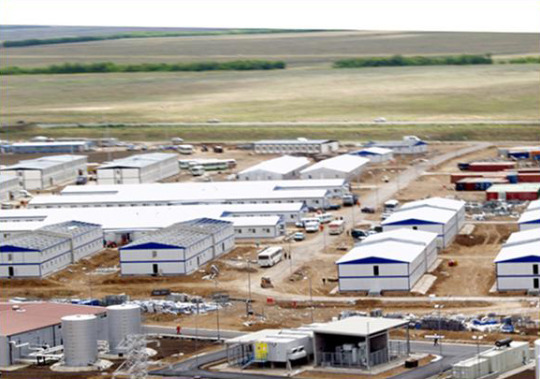#Quantity Surveyors in London
Text





The Scottish actor Bill Paterson, was born on June 3rd 1945 in Glasgow.
After a three year stint as a struggling apprentice quantity surveyor he escaped to do a teaching course at the Royal Scottish Academy of Music and Drama. His first professional appearance was with Glasgow's Citizens Theatre in their 1967 production of Brecht’s ‘Arturo Ui’ which also launched the career of Leonard Rossiter.
From 1970 – 72 he was with the Citizen’s Theatre for Youth as actor and assistant director and at the 1972 Edinburgh Festival he appeared in the now historic ‘Great Northern Welly Boot Show’ written by and featuring Billy Connolly. He then became a founding member of John McGrath’s 7:84 Theatre Company and toured extensively throughout Scotland, Ireland and Europe with such shows as ‘The Cheviot’, and ‘The Stag and the Black Oil’ He made his first appearance in London in 1976 with the company.
As well as his theatre work Bill has made a successful career on Television, from the 70's right through to nowadays, his most notable in my opinion were, Smiley's People, Auf Wiedersehen, Pet, The Singing Detective and Traffik, as well as big screen roles in The Killing Fields and Comfort and Joy.
Paterson has more recently been appeared in the sitcom, Fleabag, The Rebel, with Simon Callow, and the very successful Outlander as the recurring character Ned Gowan he also portrayed Douglas Henshall's faither in the excellent Shetland. Bill was also in the black comedy, Guilt, set in Edinburgh and also starring Mark Bonnar, if you haven't seen it look it up, it's very good.
A wee look on the IMDb tells me he is set to appear in an interesting TV film telling the story of Edinburgh Zoo's famous bear, Wojtek, who was a "soldier in the Polish Army during World War two. Another promising production is Arthur's Whisky for Sky, it is a coming-of-age story with a twist starring Diane Keaton, Patricia Hodge and Lulu, the media site say it is the story of three elderly ladies who drink a whisky which makes them younger, look out for it on Sky Cinema later in the year. Paterson is also to voice a character in Banking on Mr. Toad, a family drama about Scottish writer Kenneth Grahame, the birth of his iconic story "The Wind In The Willows" and life with wife Elsie and Alastair, their troubled young son.
Bill was awarded the Outstanding Contribution to Film & Television accolade at the 2015 BAFTA Scotland Awards.
34 notes
·
View notes
Text
Good afternoon TUMBLR - April 4th - 2024
''Mr. Plant has owed me a shoe since July 5, 1971."
Aksai, Kazakhstan - July 2000 - December 2001.
Part 1.
A few months after returning from Nigeria, I went to Busseto to sign the contract to go to Kazakhstan.
My son and my friend Gianluigi were with me: we spent a beautiful day having lunch under a plane tree in Roncole Verdi, right in front of the birthplace of the Great Maestro Giuseppe Verdi.

House where Giuseppe Verdi was born in October 1813
FIRST JOURNEY TO KAZAKHSTAN
The trip was something unusual: an appointment at Malpensa airport with a guy called Di Meo, who would be the surveyor of the project.
The destination was Uralsk, a city in the North-West of Kazakhstan. At the moment there were no direct flights, nor connections with international airlines with that city, so AGIP offers a charter that will stop in London-Stanstead before heading to Uralsk. Check-in was atypical, in the sense that there were no tickets, but just a list of passengers theground hostess receives from AGIP Company itself. This was the cause of quite a few problems, because many times the passenger's name does not appear on the list, but since the passengers were AGIP employees, they were allowed on the plane anyway.
We left for London and we were about 30 Italians, all of us involved in construction activities. Eventually about 70 Britishers will board the plane at Stanstead airport: all of Planners, Contract Administrators, HSEs, Quantity Surveyors - in short, all office people, and, as I will know later, with contracts worth 20,000+ dollars/month and 28/28 rotation. Practically, the demonstration that colonialism ended on paper, but in reality it still exists and thrives today.
After an uncomfortable flight, we arrived in Uralsk early in the morning - it was early July, but it was cold like we were in February. First impact with the Kazakh border police: hats of absurd dimensions, immediately renamed ''4 seasons pizza'' - airport in pure Soviet style, with corridors and doors to enter small rooms, which have doors that lead to other corridors and other rooms. Eventually, surrounded by an excessive number of cops, we arrived in front of an agent who goes through a passenger's list and asks questions in Russian that no one can answer (but this doesn't seem to matter much to him). In the meantime other policemen are walking around us, looking at our faces very closely (perhaps to check the iris of our eyes?) sometimes whispering sentence like:
Do you have drugs with you?
The most important thing is that our names are on the list, on one of those teleprinter sheets from the past, which while we are there continues to belch out paper that accumulates folded on the ground, one sheet on top of the other. Anyone who does not appear on the list is put in a corner: this is the case of a Neapolitan from AGIP (who I later discovered was a cashier). At the threat of having him leave immediately for Italy (the charter returned with the people who had completed the shift) like a ''good Neapolitan'' he started making a Neapolitan drama. With tears and sobs, he first convinced the Kazakh cop to leave him on separate room - later an AGIP official would speak to the airport police head, to let him enter the country (among other things, the Neapolitan was in possession of a Resident Visa, so why stop him at the border?). Because from the perspective of ex-Soviet Immigration Police the policy was ''if a person is not on the list, don't let him through'' - and they respected the orders to the letter.
DI MEO NEW CELL PHONE.
So Di Meo, as the project's surveyor, was given the thankless task of bringing the tools of the trade to Kazakhstan, including the latest generation T3 total station. We were then invited by police to go up to airport first floor, to complete the formalities for temporarily importing the equipment. We climbed the stairs with difficulty, loaded like mules, with luggages, staffs, backpacks etc, and after an interminable hour of signatures, countersignatures and stamps on forms strictly printed in Cyrillic, we managed to reach the AGIP bus that would take us to Aksai , about 150 km north of Uralsk.
BUT..............Without surveying equipment, of course!!! Yes, because customs officers would never have missed a golden opportunity to ''snatch'' some money from foreigners who wanted to import something into their country. But Di Meo and I were simple ''employees'', so the message to report to Company management was: ''We must check the actual correspondence of the serial numbers of the equipment with those noted on the import request''.
So, they said, in a couple of days send the guy of your company who deals with customs, and all the equipment will be delivered to him.
The other passengers greeted us with sighs and dirty looks when, after more than an hour of waiting, we boarded the bus which immediately left for Aksai. Once seated, Di Meo said:
Well, since we have a couple of hours of travel, let's see how my new mobile phone that I got at Malpensa duty free is doing.
And he started rummaging in his backpack but… no trace of the cell phone box!! He searched desperately in all numerous pockets, but nothing, the cell phone had disappeared! So we started making hypotheses like: ''when did you last see him, where did you put your backpack etc…''
The bitter conclusion was that the only moment in which someone could have put their hands in the ruckzack and stolen the phone was precisely when, in theory, it should have been safer: in the Customs Police corridor at the Airport!
But in two days I'll go back to the airport too, and then they'll hear me!! Said Di Meo........
His Kazakh adventure began in the worst possible way.
AKSAI
We reached Aksai after a boring 3 hrs journey: the steppe surrounding the highway was incredibly monotonous (I think the main reason why Genghis Khan continued to ride towards the West for weeks and months was: TO SEE SOMETHING DIFFERENT OF ALL THAT YELLOW-GREEN ENDLESS EXTENSION !!)
Aksai was a town of 35,000 inhabitants perfectly similar to all the other hundreds of former Soviet Union cities and towns scattered throughout the immense Ex - Empire. During 1954–1961, engineer Vitaly Lagutenko, chief planner of Moscow since 1956, designed and tested the mass-scale, industrialized construction process, relying on concrete panel plants and a quick assembly schedule. During 1961, Lagutenko's institute released the K-7 design of a prefabricated 5-story building that became typical of the khrushchevka. The khrushchevkas were cheap, and sometimes an entire building could be constructed within two weeks. Poor quality construction has since become a liability, leading Moscow to announce the Moscow Urban Renewal Initiative an effort to replace structures that ended their functional lives.of what the prefabricated condominiums that formed the so-called ''Micro-Rayon'' (Neighborhoods) should have looked like.

Whether it was Moscow, St. Petersburg, Chelyabinsk, Tomsk or Vladivostock or Crimea, the apartment blocks were ALL the same. Ground floor used as a portico, seven or eight floors, without lift (those that had one didn't work) 2 or 3-room apartments (depending on who was going to live there, and in 3-room apartments it was not uncommon for two to live different families). In the center of the neighborhood there was a mini power plant generally powered by gas, for the production of hot water which was distributed to the various users with insulated pipes above ground, sometimes making it difficult to access the condominiums themselves - for which there were iron stairs that went over the pipes. Pipes which over the years, due to the absolute lack of maintenance, lost their sheet metal insulation and rock wool because people walked on them.


Always in a central position in relation to the houses, the public gardens, made up of games for children such as slides or revolving carousels, regularly broken down, rusty and abandoned.

The appearance of the condominiums was made extremely heartbreaking by the lack of accuracy with which they had been built, by the paucity of the materials and above all by an inveterate habit that I would have found in all the cities of the former Soviet Union: that of closing the balcony with the materials more diverse! I have never seen a veranda the same as another in 7 years of Kazakhstan!
And then the last big innovation introduced after independence from the Soviet Union: the possibility of opening small businesses, such as mini-shops or ''restaurants'' in your own apartment on the first floor. Since access to these shops or restaurants could not be from the common stairs, absurd stairs had been built outside the buildings, which in a single flight led from the street level to the first floor - very dangerous in winter, with ice always present on the steps.
Then there was the ''old'' Aksai in the sense of a part of the city made up of that type of Russian wooden houses, surrounded by mangy gardens, the rear courtyard was often used as a ''landfill'' in the sense that the owners there they accumulated old objects (see
(even a bus) with the philosophy of 'who knows'…maybe one day it could be useful….
And the roofs of these houses are all strictly in Eternit!! Equipped with malfunctioning water systems, the winter regularly saw queues of children with wooden sleds getting water from the few public pumps that did not freeze. Another characteristic of Aksai (as of all other cities) is the gas distribution network: the 2 and a half inch pipe, yellow in colour, ran about 2-3 meters above ground, supported by improbable iron posts, in around the neighborhoods, with 3 or 4 meter portals at the entrances to the houses.
CZECH CAMP


We, the privileged foreigners, all stayed at Czech Camp, a compound built by the Czechoslovaks in 1956, made up of ''Vacta'' (two-storey wooden houses with 20 mini-apartments), offices of the companies that participated in the Karachaganak project, canteens , two clubs, and a series of terraced houses that had been built more recently.
In all for around 5,000 people, and above all the only place in Aksai where there was never a shortage of water (a big problem for the city especially during winter time) . Entry to the Czech camp was regulated by strict procedures, inherited from the Soviet period. If we intended to receive a guest, he or she had to leave an identity document at the guard post and both the guest and the host had to sign the time of entry and exit in the register. And it shouldn't have been after midnight anyway.
I was then assigned to Vacta 22, in a small apartment with 2 bedrooms and a bathroom, which I shared with Di Meo.
THE KARACHAGANAK PROJECT
The Karachaganak project was an operation of gigantic dimensions, in which the ENI Group participated in a consortium made up of Shell, the Russians of Lukoil, British Gas, and the Japanese Impex. Later the Kazakh Kazmunaigas Company will purchase shares from all participants in the exploitation of the deposit, and will become part of the consortium.
The oil reservoir, very large and productive (the Northern part was delimited by the Ural river which marked the border with Russia) was discovered in the 1950s and the Russians began to exploit it a few years later, with the decisive help of Czechoslovakian technology . There were 3 crude oil processing units - Unit 3 would have been subject to a profound revamping - Unit 2 will first be demolished (too old to think about modernization) and Unit 1 will be built ex new on the ashes of the old plant.
SAIPEM, in joint venture with CCC (the Lebanese construction company owned by Arafat, for many years Sub-Contractor of SAIPEM itself) was part of the Main Works consortium, but it was quite shocking to see that in the logo of the joint venture the SAIPEM name appeared ''below'' that of CCC.
I had arrived in Kazakhstan thanks to the ''recommendation'' of my old colleague and fellow in SAIPEM, Giulio Cotti. He had already been there for a few months, as Construction Manager of UNIT2. I already knew several people from SICIM since the Abu Dhabi Taweelah project: Borchia Giorgio, the Director - Mr. Secchi, Company Vice-President. Franco Pennacchia the Civil Supervisor – Mr. Cavicchi the handyman and many others.
Then there were a whole series of figures that I would gradually get to know, some of them nice, some other no.
Among the best was undoubtedly Remo Tamburlin, the chief mechanic: a Belluno native whose Italian speaking I struggled to understand, but he claimed to be able to speak Russian too.
Carmelo Longo, Sicilian – head of pipe and carpentry installations. The two ''Engineers'' Rossi Aurelio and Cristiano were taken to gain experience and placed in the Quality office. Calogero Zinno, another Sicilian who in theory was the Construction Manager of Unit 3 but who I later replaced. Ido Presotto, Rossen Jordanov, Bulgarian with Italian passport. And then Secchi's "godson", Mentore.
UNIT 3
I was assigned to Unit 3, an old oil/gas separation plant built by the Czechoslovaks in 1956, at the dawn of exploitation of the Karachaganak field. Located about 40 km north of Aksai, we were reaching it every day with the Company's LADA NIVAs.

Basically our work consisted of revamping the Unit and that is:
Construction of a Centralized Control Room outside the perimeter of the plant.
Construction of the pipe rack and cable rack that would connect the system to the Control Room.
Laying of electro-instrumental cables and installation of control instruments within the system.
Construction of a new crude oil desulfurization unit
Construction of 4 Utilities tanks.
Assistance with the commissioning of new systems.
The works themselves were not difficult to carry out, but the great difficulty consisted in having to work inside an old and dangerous rotten plant. Alarms for H2S leaks were the order of the day - it was mandatory to wear a backpack containing an oxygen bottle and a mask when entering the plant, which in the event of an emergency would have allowed around 20 minutes of survival. We had undergone a course on the dangers of H2S, and we had learned that breathing this gas for more than twenty seconds led first to fainting, and then to death.
VISIT TO BURLIN HOSPITAL
One day we went to visit the hospital in Burlin, the capital of the so-called ''Oblast'' at about 40 km from Aksai. We wanted to see what type of assistance the hospital could provide in the event of illnesses or accidents. It was a sort of ''go to hell''. It was mid-August, and in addition to myself, Calogero Zinno and Franco Pennacchia were taking part in the mission.
At halfway to destination we saw a sort of petrol station, so we stopped for a drink, given the heat. We asked the lady who ran the station if she had ''svezheye pivo'' (fresh beer - Zinno blurted out a few words of Russo, given his previous experience in Ufa, Russia). The lady - quite old even though assigning ages to people in Kazakhstan is certainly not an easy exercise - without saying a word takes Pennacchia by the arm, who seemed to be the most ''in shape'' and drags him into the back of the shop. After placing Franco in front to a sort of manual pump, she orders him to ''pump'' vigorously until she tells him to stop.
In the meantime, both Zinno and I look on, wondering what will happen, the lady places three large empty mugs under a rubber tube sticking out of the counter. In fact, after a few seconds, the beer begins to flow from the tube and fill the mugs. Halfway through the second mug, the Lady said ''ALT…ALT…'' to Pennacchia, to prevent the beer from spilling out of the third mug. The beer wasn't bad, even if it was actually at cellar temperature.
Once we arrived in Burlin, we had no difficulty finding the hospital, since we were in a small like village, and the hospital building towered over the low houses. At first glance we immediately understood that the hospital would not be of any help to us. We were received by the Head Nurse, who kindly accompanied us inside the structure - which was old and run down, with dormitories with 20 or more beds, sometimes separated by curtains. Everything very clean and with that typical smell of sawdust and disinfectant. The nurse told us that they couldn't do much there in case of accidents or illnesses of a certain severity. But the thing that really left us speechless was when Zinno asked to use the toilet, and the nurse showed him some toilets in the hospital courtyard. Zinno then asked if those were for visitors, but the nurse - visibly embarrassed - replied that they were the only services available, both for patients, for staff, and for visitors.!! What we immediately thought of was the extreme discomfort for a sick person to have to go out into a courtyard to go to the bathroom, especially in winter, when the temperature could drop to -40 C.
PS: among the socially useful works carried out by AGIP during that first year, there was the complete renovation of the Aksai hospital - it was made efficient and ready for any emergency, and decent in appearance, with a total expense of over 5 million EUR.

1 note
·
View note
Text
Tim Groom unwraps mill-inspired housing in Manchester

The first residents have moved into this £24 million build-to-rent scheme on the edge of Manchester’s Northern Quarter designed by local practice Tim Groom Architects.
The 144 apartment 12-storey project in Oldham Road has been developed by Mulbury City for funder and ‘long-term custodians’ of the building, Cheyne Capital.
The investment funds came from London-based Cheyne Capital’s Impact Real Estate Fund, set up to tackle the UK’s shortage of affordable housing. Around a third of the homes are earmarked for local key workers, such as nurses and teachers, at discounted rents.
The 11,690m² stepped scheme on the ‘long and thin’ plot houses a mix of one-, two- and three-bedroom apartments.
The practice describes the scheme as a modern ‘mill’ building.
Clad in brick, the exterior of the Poplin development – named after the fabric used to make coats on the site during the Second World War – was inspired by the warehouse arches in the surrounding New Cross area and neighbouring Ancoats Conservation Area.
Contractor GMI Construction Group took 24 months to complete the project.
Project data
Location 2 Addington St/Oldham Road, New Cross, Manchester
Local authority Manchester City Council
Type of project Residential
Client Mulbury City for Cheyne Capital
Architect Tim Groom Architects
Interior designer YOUTH
Landscape architect Layer
Planning consultant Deloitte
Structural engineer Ridge
M&E consultant Ameon
Quantity surveyor RLB
Principal designer Rawlings CDM
Lighting consultant Artin
Main contractor GMI Construction Group
Funding Cheyne Capital
Tender date November 2020
Start on site date June 2021
Completion date June 2023
Contract duration 24 months
Gross internal floor area 11,690m²
Form of contractt Design and Build
Annual CO2 emissions 1,836 kg/CO²/m²
Total cost £24 million

0 notes
Text
Tim Groom unwraps mill-inspired housing in Manchester

The first residents have moved into this £24 million build-to-rent scheme on the edge of Manchester’s Northern Quarter designed by local practice Tim Groom Architects.
The 144 apartment 12-storey project in Oldham Road has been developed by Mulbury City for funder and ‘long-term custodians’ of the building, Cheyne Capital.
The investment funds came from London-based Cheyne Capital’s Impact Real Estate Fund, set up to tackle the UK’s shortage of affordable housing. Around a third of the homes are earmarked for local key workers, such as nurses and teachers, at discounted rents.
The 11,690m² stepped scheme on the ‘long and thin’ plot houses a mix of one-, two- and three-bedroom apartments.
The practice describes the scheme as a modern ‘mill’ building.
Clad in brick, the exterior of the Poplin development – named after the fabric used to make coats on the site during the Second World War – was inspired by the warehouse arches in the surrounding New Cross area and neighbouring Ancoats Conservation Area.
Contractor GMI Construction Group took 24 months to complete the project.
Project data
Location 2 Addington St/Oldham Road, New Cross, Manchester
Local authority Manchester City Council
Type of project Residential
Client Mulbury City for Cheyne Capital
Architect Tim Groom Architects
Interior designer YOUTH
Landscape architect Layer
Planning consultant Deloitte
Structural engineer Ridge
M&E consultant Ameon
Quantity surveyor RLB
Principal designer Rawlings CDM
Lighting consultant Artin
Main contractor GMI Construction Group
Funding Cheyne Capital
Tender date November 2020
Start on site date June 2021
Completion date June 2023
Contract duration 24 months
Gross internal floor area 11,690m²
Form of contractt Design and Build
Annual CO2 emissions 1,836 kg/CO²/m²
Total cost £24 million

0 notes
Text
Tim Groom unwraps mill-inspired housing in Manchester

The first residents have moved into this £24 million build-to-rent scheme on the edge of Manchester’s Northern Quarter designed by local practice Tim Groom Architects.
The 144 apartment 12-storey project in Oldham Road has been developed by Mulbury City for funder and ‘long-term custodians’ of the building, Cheyne Capital.
The investment funds came from London-based Cheyne Capital’s Impact Real Estate Fund, set up to tackle the UK’s shortage of affordable housing. Around a third of the homes are earmarked for local key workers, such as nurses and teachers, at discounted rents.
The 11,690m² stepped scheme on the ‘long and thin’ plot houses a mix of one-, two- and three-bedroom apartments.
The practice describes the scheme as a modern ‘mill’ building.
Clad in brick, the exterior of the Poplin development – named after the fabric used to make coats on the site during the Second World War – was inspired by the warehouse arches in the surrounding New Cross area and neighbouring Ancoats Conservation Area.
Contractor GMI Construction Group took 24 months to complete the project.
Project data
Location 2 Addington St/Oldham Road, New Cross, Manchester
Local authority Manchester City Council
Type of project Residential
Client Mulbury City for Cheyne Capital
Architect Tim Groom Architects
Interior designer YOUTH
Landscape architect Layer
Planning consultant Deloitte
Structural engineer Ridge
M&E consultant Ameon
Quantity surveyor RLB
Principal designer Rawlings CDM
Lighting consultant Artin
Main contractor GMI Construction Group
Funding Cheyne Capital
Tender date November 2020
Start on site date June 2021
Completion date June 2023
Contract duration 24 months
Gross internal floor area 11,690m²
Form of contractt Design and Build
Annual CO2 emissions 1,836 kg/CO²/m²
Total cost £24 million

0 notes
Text
Tim Groom unwraps mill-inspired housing in Manchester

The first residents have moved into this £24 million build-to-rent scheme on the edge of Manchester’s Northern Quarter designed by local practice Tim Groom Architects.
The 144 apartment 12-storey project in Oldham Road has been developed by Mulbury City for funder and ‘long-term custodians’ of the building, Cheyne Capital.
The investment funds came from London-based Cheyne Capital’s Impact Real Estate Fund, set up to tackle the UK’s shortage of affordable housing. Around a third of the homes are earmarked for local key workers, such as nurses and teachers, at discounted rents.
The 11,690m² stepped scheme on the ‘long and thin’ plot houses a mix of one-, two- and three-bedroom apartments.
The practice describes the scheme as a modern ‘mill’ building.
Clad in brick, the exterior of the Poplin development – named after the fabric used to make coats on the site during the Second World War – was inspired by the warehouse arches in the surrounding New Cross area and neighbouring Ancoats Conservation Area.
Contractor GMI Construction Group took 24 months to complete the project.
Project data
Location 2 Addington St/Oldham Road, New Cross, Manchester
Local authority Manchester City Council
Type of project Residential
Client Mulbury City for Cheyne Capital
Architect Tim Groom Architects
Interior designer YOUTH
Landscape architect Layer
Planning consultant Deloitte
Structural engineer Ridge
M&E consultant Ameon
Quantity surveyor RLB
Principal designer Rawlings CDM
Lighting consultant Artin
Main contractor GMI Construction Group
Funding Cheyne Capital
Tender date November 2020
Start on site date June 2021
Completion date June 2023
Contract duration 24 months
Gross internal floor area 11,690m²
Form of contractt Design and Build
Annual CO2 emissions 1,836 kg/CO²/m²
Total cost £24 million

0 notes
Text
Tim Groom unwraps mill-inspired housing in Manchester

The first residents have moved into this £24 million build-to-rent scheme on the edge of Manchester’s Northern Quarter designed by local practice Tim Groom Architects.
The 144 apartment 12-storey project in Oldham Road has been developed by Mulbury City for funder and ‘long-term custodians’ of the building, Cheyne Capital.
The investment funds came from London-based Cheyne Capital’s Impact Real Estate Fund, set up to tackle the UK’s shortage of affordable housing. Around a third of the homes are earmarked for local key workers, such as nurses and teachers, at discounted rents.
The 11,690m² stepped scheme on the ‘long and thin’ plot houses a mix of one-, two- and three-bedroom apartments.
The practice describes the scheme as a modern ‘mill’ building.
Clad in brick, the exterior of the Poplin development – named after the fabric used to make coats on the site during the Second World War – was inspired by the warehouse arches in the surrounding New Cross area and neighbouring Ancoats Conservation Area.
Contractor GMI Construction Group took 24 months to complete the project.
Project data
Location 2 Addington St/Oldham Road, New Cross, Manchester
Local authority Manchester City Council
Type of project Residential
Client Mulbury City for Cheyne Capital
Architect Tim Groom Architects
Interior designer YOUTH
Landscape architect Layer
Planning consultant Deloitte
Structural engineer Ridge
M&E consultant Ameon
Quantity surveyor RLB
Principal designer Rawlings CDM
Lighting consultant Artin
Main contractor GMI Construction Group
Funding Cheyne Capital
Tender date November 2020
Start on site date June 2021
Completion date June 2023
Contract duration 24 months
Gross internal floor area 11,690m²
Form of contractt Design and Build
Annual CO2 emissions 1,836 kg/CO²/m²
Total cost £24 million

0 notes
Text
Tim Groom unwraps mill-inspired housing in Manchester

The first residents have moved into this £24 million build-to-rent scheme on the edge of Manchester’s Northern Quarter designed by local practice Tim Groom Architects.
The 144 apartment 12-storey project in Oldham Road has been developed by Mulbury City for funder and ‘long-term custodians’ of the building, Cheyne Capital.
The investment funds came from London-based Cheyne Capital’s Impact Real Estate Fund, set up to tackle the UK’s shortage of affordable housing. Around a third of the homes are earmarked for local key workers, such as nurses and teachers, at discounted rents.
The 11,690m² stepped scheme on the ‘long and thin’ plot houses a mix of one-, two- and three-bedroom apartments.
The practice describes the scheme as a modern ‘mill’ building.
Clad in brick, the exterior of the Poplin development – named after the fabric used to make coats on the site during the Second World War – was inspired by the warehouse arches in the surrounding New Cross area and neighbouring Ancoats Conservation Area.
Contractor GMI Construction Group took 24 months to complete the project.
Project data
Location 2 Addington St/Oldham Road, New Cross, Manchester
Local authority Manchester City Council
Type of project Residential
Client Mulbury City for Cheyne Capital
Architect Tim Groom Architects
Interior designer YOUTH
Landscape architect Layer
Planning consultant Deloitte
Structural engineer Ridge
M&E consultant Ameon
Quantity surveyor RLB
Principal designer Rawlings CDM
Lighting consultant Artin
Main contractor GMI Construction Group
Funding Cheyne Capital
Tender date November 2020
Start on site date June 2021
Completion date June 2023
Contract duration 24 months
Gross internal floor area 11,690m²
Form of contractt Design and Build
Annual CO2 emissions 1,836 kg/CO²/m²
Total cost £24 million

0 notes
Text
Tim Groom unwraps mill-inspired housing in Manchester

The first residents have moved into this £24 million build-to-rent scheme on the edge of Manchester’s Northern Quarter designed by local practice Tim Groom Architects.
The 144 apartment 12-storey project in Oldham Road has been developed by Mulbury City for funder and ‘long-term custodians’ of the building, Cheyne Capital.
The investment funds came from London-based Cheyne Capital’s Impact Real Estate Fund, set up to tackle the UK’s shortage of affordable housing. Around a third of the homes are earmarked for local key workers, such as nurses and teachers, at discounted rents.
The 11,690m² stepped scheme on the ‘long and thin’ plot houses a mix of one-, two- and three-bedroom apartments.
The practice describes the scheme as a modern ‘mill’ building.
Clad in brick, the exterior of the Poplin development – named after the fabric used to make coats on the site during the Second World War – was inspired by the warehouse arches in the surrounding New Cross area and neighbouring Ancoats Conservation Area.
Contractor GMI Construction Group took 24 months to complete the project.
Project data
Location 2 Addington St/Oldham Road, New Cross, Manchester
Local authority Manchester City Council
Type of project Residential
Client Mulbury City for Cheyne Capital
Architect Tim Groom Architects
Interior designer YOUTH
Landscape architect Layer
Planning consultant Deloitte
Structural engineer Ridge
M&E consultant Ameon
Quantity surveyor RLB
Principal designer Rawlings CDM
Lighting consultant Artin
Main contractor GMI Construction Group
Funding Cheyne Capital
Tender date November 2020
Start on site date June 2021
Completion date June 2023
Contract duration 24 months
Gross internal floor area 11,690m²
Form of contractt Design and Build
Annual CO2 emissions 1,836 kg/CO²/m²
Total cost £24 million

0 notes
Text
Tim Groom unwraps mill-inspired housing in Manchester

The first residents have moved into this £24 million build-to-rent scheme on the edge of Manchester’s Northern Quarter designed by local practice Tim Groom Architects.
The 144 apartment 12-storey project in Oldham Road has been developed by Mulbury City for funder and ‘long-term custodians’ of the building, Cheyne Capital.
The investment funds came from London-based Cheyne Capital’s Impact Real Estate Fund, set up to tackle the UK’s shortage of affordable housing. Around a third of the homes are earmarked for local key workers, such as nurses and teachers, at discounted rents.
The 11,690m² stepped scheme on the ‘long and thin’ plot houses a mix of one-, two- and three-bedroom apartments.
The practice describes the scheme as a modern ‘mill’ building.
Clad in brick, the exterior of the Poplin development – named after the fabric used to make coats on the site during the Second World War – was inspired by the warehouse arches in the surrounding New Cross area and neighbouring Ancoats Conservation Area.
Contractor GMI Construction Group took 24 months to complete the project.
Project data
Location 2 Addington St/Oldham Road, New Cross, Manchester
Local authority Manchester City Council
Type of project Residential
Client Mulbury City for Cheyne Capital
Architect Tim Groom Architects
Interior designer YOUTH
Landscape architect Layer
Planning consultant Deloitte
Structural engineer Ridge
M&E consultant Ameon
Quantity surveyor RLB
Principal designer Rawlings CDM
Lighting consultant Artin
Main contractor GMI Construction Group
Funding Cheyne Capital
Tender date November 2020
Start on site date June 2021
Completion date June 2023
Contract duration 24 months
Gross internal floor area 11,690m²
Form of contractt Design and Build
Annual CO2 emissions 1,836 kg/CO²/m²
Total cost £24 million

0 notes
Photo









Happy Birthday actor Bill Paterson, born on June 3rd 1945 in Glasgow.
Paterson was destined at first for a career as a quantity surveyor, before he rebelled and enrolled at the Royal Scottish Academy of Music and Drama; and soon after he graduated, while he was working at the Citizens’, he became closely involved with the brilliant generation of theatre-makers – including Billy Connolly, Alex Norton, John Bett, Kenny Ireland, John Byrne and John McGrath – who would soon go on to create the Great Northern Welly Boot Show of 1972, and to found the legendary radical touring company 7:84 Scotland.
Paterson shot to national fame in Scotland in 1973, when he created the unforgettable role of Glasgow wide-boy property developer McChuckemup, in 7:84’s unforgettable opening show, The Cheviot, The Stag, And The Black, Black Oil. Then in 1977, he starred in John Byrne’s first play Writer’s Cramp as the improbable hero, Paisley poet Francis Seneca McDade; and after the play transferred to London, quickly developed a successful stage and screen career there, playing the Good Soldier Schewyk in a memorable 1982 production at the National Theatre, and winning roles in films ranging from Bill Forsyth’s Comfort And Joy to The Killing Fields and Truly Madly Deeply. He has appeared in countless television series and radio plays, and published a book of stories based on his Glasgow childhood, Tales From The Back Green; and in 2015, he made a triumphant return to the Scottish stage when he appeared with Brian Cox in the Lyceum Theatre Company’s superb 50th anniversary production of Samuel Beckett’s Waiting For Godot.
Motre recently we have seen Bill appear on the small screen in the comedy Fleabag and in Outlander. In 219 he starred in the blac comedy Guilt, set in Edinburgh.
Upcoming projects for Paterson are House of the Dragon, the prequal to Game of Thrones, Banking on Mr. Toad based on the Wind in the Willows story and most interesting to me is a TV Movie called A Bear Named Wojtek, it’s the story of the famous bear adopted by Polish soldiers during World War, he ended up in Edinburgh Zoo after the war.
In 2015, Bill Paterson won a lifetime achievement award for his Outstanding Contribution to Film & Television in the Scottish BAFTA awards to add to his BAFTA Scotland gong for best actor in The Crow Road.
20 notes
·
View notes
Text
Tim Groom unwraps mill-inspired housing in Manchester

The first residents have moved into this £24 million build-to-rent scheme on the edge of Manchester’s Northern Quarter designed by local practice Tim Groom Architects.
The 144 apartment 12-storey project in Oldham Road has been developed by Mulbury City for funder and ‘long-term custodians’ of the building, Cheyne Capital.
The investment funds came from London-based Cheyne Capital’s Impact Real Estate Fund, set up to tackle the UK’s shortage of affordable housing. Around a third of the homes are earmarked for local key workers, such as nurses and teachers, at discounted rents.
The 11,690m² stepped scheme on the ‘long and thin’ plot houses a mix of one-, two- and three-bedroom apartments.
The practice describes the scheme as a modern ‘mill’ building.
Clad in brick, the exterior of the Poplin development – named after the fabric used to make coats on the site during the Second World War – was inspired by the warehouse arches in the surrounding New Cross area and neighbouring Ancoats Conservation Area.
Contractor GMI Construction Group took 24 months to complete the project.
Project data
Location 2 Addington St/Oldham Road, New Cross, Manchester
Local authority Manchester City Council
Type of project Residential
Client Mulbury City for Cheyne Capital
Architect Tim Groom Architects
Interior designer YOUTH
Landscape architect Layer
Planning consultant Deloitte
Structural engineer Ridge
M&E consultant Ameon
Quantity surveyor RLB
Principal designer Rawlings CDM
Lighting consultant Artin
Main contractor GMI Construction Group
Funding Cheyne Capital
Tender date November 2020
Start on site date June 2021
Completion date June 2023
Contract duration 24 months
Gross internal floor area 11,690m²
Form of contractt Design and Build
Annual CO2 emissions 1,836 kg/CO²/m²
Total cost £24 million

0 notes
Text
Tim Groom unwraps mill-inspired housing in Manchester

The first residents have moved into this £24 million build-to-rent scheme on the edge of Manchester’s Northern Quarter designed by local practice Tim Groom Architects.
The 144 apartment 12-storey project in Oldham Road has been developed by Mulbury City for funder and ‘long-term custodians’ of the building, Cheyne Capital.
The investment funds came from London-based Cheyne Capital’s Impact Real Estate Fund, set up to tackle the UK’s shortage of affordable housing. Around a third of the homes are earmarked for local key workers, such as nurses and teachers, at discounted rents.
The 11,690m² stepped scheme on the ‘long and thin’ plot houses a mix of one-, two- and three-bedroom apartments.
The practice describes the scheme as a modern ‘mill’ building.
Clad in brick, the exterior of the Poplin development – named after the fabric used to make coats on the site during the Second World War – was inspired by the warehouse arches in the surrounding New Cross area and neighbouring Ancoats Conservation Area.
Contractor GMI Construction Group took 24 months to complete the project.
Project data
Location 2 Addington St/Oldham Road, New Cross, Manchester
Local authority Manchester City Council
Type of project Residential
Client Mulbury City for Cheyne Capital
Architect Tim Groom Architects
Interior designer YOUTH
Landscape architect Layer
Planning consultant Deloitte
Structural engineer Ridge
M&E consultant Ameon
Quantity surveyor RLB
Principal designer Rawlings CDM
Lighting consultant Artin
Main contractor GMI Construction Group
Funding Cheyne Capital
Tender date November 2020
Start on site date June 2021
Completion date June 2023
Contract duration 24 months
Gross internal floor area 11,690m²
Form of contractt Design and Build
Annual CO2 emissions 1,836 kg/CO²/m²
Total cost £24 million

0 notes
Text
Tim Groom unwraps mill-inspired housing in Manchester

The first residents have moved into this £24 million build-to-rent scheme on the edge of Manchester’s Northern Quarter designed by local practice Tim Groom Architects.
The 144 apartment 12-storey project in Oldham Road has been developed by Mulbury City for funder and ‘long-term custodians’ of the building, Cheyne Capital.
The investment funds came from London-based Cheyne Capital’s Impact Real Estate Fund, set up to tackle the UK’s shortage of affordable housing. Around a third of the homes are earmarked for local key workers, such as nurses and teachers, at discounted rents.
The 11,690m² stepped scheme on the ‘long and thin’ plot houses a mix of one-, two- and three-bedroom apartments.
The practice describes the scheme as a modern ‘mill’ building.
Clad in brick, the exterior of the Poplin development – named after the fabric used to make coats on the site during the Second World War – was inspired by the warehouse arches in the surrounding New Cross area and neighbouring Ancoats Conservation Area.
Contractor GMI Construction Group took 24 months to complete the project.
Project data
Location 2 Addington St/Oldham Road, New Cross, Manchester
Local authority Manchester City Council
Type of project Residential
Client Mulbury City for Cheyne Capital
Architect Tim Groom Architects
Interior designer YOUTH
Landscape architect Layer
Planning consultant Deloitte
Structural engineer Ridge
M&E consultant Ameon
Quantity surveyor RLB
Principal designer Rawlings CDM
Lighting consultant Artin
Main contractor GMI Construction Group
Funding Cheyne Capital
Tender date November 2020
Start on site date June 2021
Completion date June 2023
Contract duration 24 months
Gross internal floor area 11,690m²
Form of contractt Design and Build
Annual CO2 emissions 1,836 kg/CO²/m²
Total cost £24 million

0 notes
Text
Tim Groom unwraps mill-inspired housing in Manchester

The first residents have moved into this £24 million build-to-rent scheme on the edge of Manchester’s Northern Quarter designed by local practice Tim Groom Architects.
The 144 apartment 12-storey project in Oldham Road has been developed by Mulbury City for funder and ‘long-term custodians’ of the building, Cheyne Capital.
The investment funds came from London-based Cheyne Capital’s Impact Real Estate Fund, set up to tackle the UK’s shortage of affordable housing. Around a third of the homes are earmarked for local key workers, such as nurses and teachers, at discounted rents.
The 11,690m² stepped scheme on the ‘long and thin’ plot houses a mix of one-, two- and three-bedroom apartments.
The practice describes the scheme as a modern ‘mill’ building.
Clad in brick, the exterior of the Poplin development – named after the fabric used to make coats on the site during the Second World War – was inspired by the warehouse arches in the surrounding New Cross area and neighbouring Ancoats Conservation Area.
Contractor GMI Construction Group took 24 months to complete the project.
Project data
Location 2 Addington St/Oldham Road, New Cross, Manchester
Local authority Manchester City Council
Type of project Residential
Client Mulbury City for Cheyne Capital
Architect Tim Groom Architects
Interior designer YOUTH
Landscape architect Layer
Planning consultant Deloitte
Structural engineer Ridge
M&E consultant Ameon
Quantity surveyor RLB
Principal designer Rawlings CDM
Lighting consultant Artin
Main contractor GMI Construction Group
Funding Cheyne Capital
Tender date November 2020
Start on site date June 2021
Completion date June 2023
Contract duration 24 months
Gross internal floor area 11,690m²
Form of contractt Design and Build
Annual CO2 emissions 1,836 kg/CO²/m²
Total cost £24 million

0 notes
Text
Tim Groom unwraps mill-inspired housing in Manchester

The first residents have moved into this £24 million build-to-rent scheme on the edge of Manchester’s Northern Quarter designed by local practice Tim Groom Architects.
The 144 apartment 12-storey project in Oldham Road has been developed by Mulbury City for funder and ‘long-term custodians’ of the building, Cheyne Capital.
The investment funds came from London-based Cheyne Capital’s Impact Real Estate Fund, set up to tackle the UK’s shortage of affordable housing. Around a third of the homes are earmarked for local key workers, such as nurses and teachers, at discounted rents.
The 11,690m² stepped scheme on the ‘long and thin’ plot houses a mix of one-, two- and three-bedroom apartments.
The practice describes the scheme as a modern ‘mill’ building.
Clad in brick, the exterior of the Poplin development – named after the fabric used to make coats on the site during the Second World War – was inspired by the warehouse arches in the surrounding New Cross area and neighbouring Ancoats Conservation Area.
Contractor GMI Construction Group took 24 months to complete the project.
Project data
Location 2 Addington St/Oldham Road, New Cross, Manchester
Local authority Manchester City Council
Type of project Residential
Client Mulbury City for Cheyne Capital
Architect Tim Groom Architects
Interior designer YOUTH
Landscape architect Layer
Planning consultant Deloitte
Structural engineer Ridge
M&E consultant Ameon
Quantity surveyor RLB
Principal designer Rawlings CDM
Lighting consultant Artin
Main contractor GMI Construction Group
Funding Cheyne Capital
Tender date November 2020
Start on site date June 2021
Completion date June 2023
Contract duration 24 months
Gross internal floor area 11,690m²
Form of contractt Design and Build
Annual CO2 emissions 1,836 kg/CO²/m²
Total cost £24 million

0 notes